BY STEVE POND
 When Amy Heckerling began shooting Fast Times at Ridgemont High in 1981, she was in her mid-20s, inexperienced, working with a first-time screenwriter (Cameron Crowe, then a journalist adapting his own book, before he became a director), a small budget of $5 million and a shooting schedule of barely more than a month. But Heckerling assembled a cast of youngsters with bright futures: Jennifer Jason Leigh, Phoebe Cates, Forest Whitaker, Eric Stoltz, Anthony Edwards, a glorified extra named Nicolas Coppola who would soon ditch his last name in favor of Cage. And most notably, Sean Penn, who would make an indelible impression as Ridgemont High's surfer 'n' stoner cum laude, Jeff Spicoli.
When Amy Heckerling began shooting Fast Times at Ridgemont High in 1981, she was in her mid-20s, inexperienced, working with a first-time screenwriter (Cameron Crowe, then a journalist adapting his own book, before he became a director), a small budget of $5 million and a shooting schedule of barely more than a month. But Heckerling assembled a cast of youngsters with bright futures: Jennifer Jason Leigh, Phoebe Cates, Forest Whitaker, Eric Stoltz, Anthony Edwards, a glorified extra named Nicolas Coppola who would soon ditch his last name in favor of Cage. And most notably, Sean Penn, who would make an indelible impression as Ridgemont High's surfer 'n' stoner cum laude, Jeff Spicoli.
With a studio that wasn't paying much attention ("Universal had bigger fish to fry," says Heckerling), the young director set out to make a comedy in the vein of American Graffiti. "That felt like a movie about young people that, if you woke up and found yourself living in the movie, you'd be happy. I wanted that kind of feel."
The episodic film culminates in a year-end dance at the school gym, where everybody gets their moment in the spotlight. But the film's breakout character, Spicoli, almost doesn't make it when he receives a last-minute house call from the stern history teacher Mr. Hand (Ray Walston), who insists on settling the score after all the time Spicoli wasted during the school year.
Heckerling says she shot everything pretty quickly and wasn't paying much attention to how it all looked. "It's not the Potemkin staircase, or flying through the air in slow motion being riddled with bullets. This was just us getting all the shit we needed to tell the story."
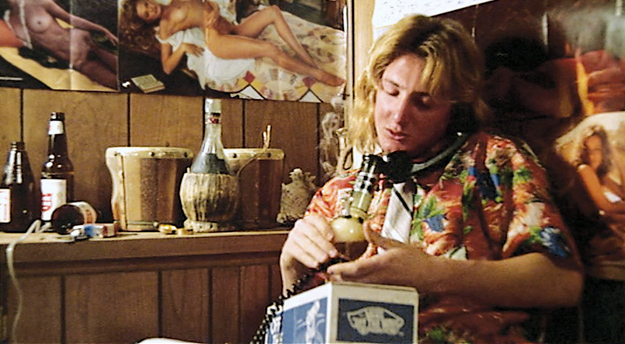
There was a lot of drug use in the movie, but the studio was fine with it—it was all in the script, and they wanted us to tell it like it is. The scene in Spicoli's bedroom where he's getting stoned was probably shot in no more than half a day. At first, Spicoli is on the phone talking to Eric Stoltz's character, who was only supposed to be a voice on the phone. At one point, Sean hits himself in the head with his shoe and says, 'That was my skull! I'm so wasted!' I wanted to keep that, but I didn't want to be stuck on that one shot. So I thought, we'd better get Eric on camera. We ran around the stages, found a bathroom set and put him in there. It was very much 'What's here, and how can we use it?'

I love Ray Walston, but he scared me. Sean would do things to push people's buttons, to get reactions. And Ray is from the theater, where you know all your lines, you know the choreography, you do what you do, and other people don't mess with it. Sean said some things which pissed Ray off. And when Ray is pissed off, he's scary. But I had to suck it up and think of what's best for the scene. In my mind, what was best for the scene, and for the rest of the movie, was for Sean to feel like he could be free in what he was doing. And so if Ray or somebody said, 'Tell him to do this or that,' I didn't.

Spicoli says he left his history book at school, but Mr. Hand pulls out an extra copy he's brought with him. Sean was very intense, and didn't like people distracting him. This was before there was video assist, so if a director wanted to see what an actor was doing, you had to be in front of them to see it. And so I was always trying to figure out where I could best see what Sean's doing, and not be where I'm distracting him. It was a tough one. I hadn't done anything when I made this movie. All I'd done were student films. The set was, like, two cheesy walls. There were no exteriors—it was as small and limited as we could get away with.

At first, I figured I'd start with a close shot and then reveal the whole gang at the dance. But that changed in editing, because I wanted to go from Spicoli's reaction when he realizes he's stuck in his room with Mr. Hand, to the dance where everybody else is having fun. It was better, right after we say to Spicoli, 'You can't have any fun, you have to do your history,' to immediately reveal everybody else at the dance. We didn't have a ton of shots, so I think this is actually the end of another shot that we see a little later. It was the biggest production shot in the movie. I dropped some balloons in front of the camera, just because I like to keep things active and fun and colorful.
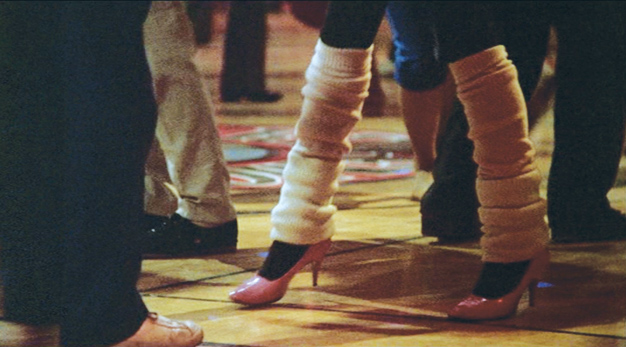
The dancing wasn't choreographed at all. They were all young people, I didn't use any professional dancers, and the whole cast was there. Some people danced better than other people, but they'd all experienced going out and dancing. It wasn't hard to get onto the floor and get the shots—I mean, nobody was doing Baryshnikov leaps across the floor. And Marilyn Vance, the costume designer, was wonderful. We shot in '81, so it was a late '70s, early '80s kind of look. It wasn't as kooky as it became a couple of years later, but those '80s clothes are still funny. We got the leg warmers before Flashdance.

I wanted to have a shot that started with the viewer thinking, 'What's this?' Then you back up and see the band, and then end up seeing the whole place. We didn't have much time to think about what we should pull back from, but the camera operator or the DP said, 'What about the mic stand?' So we started by going up the microphone stand, followed the guitar neck over to the singer, and then kept backing up. The trick was to get everything in focus, and then wind up with a big establishing shot without too many patches or holes. We only did it a few times. Actually, I did a better version of this shot in Clueless, where I started on a horn and ended with Alicia Silverstone.

The nerdy-looking singer was my ex-husband. He had a band, Reeves Nevo & the Cinch, that was playing local clubs. We gave them those early '60s matching jackets. They're playing the Eagles song 'Life in the Fast Lane' here, which wasn't my choice. I was much more of a punk in those days. But the soundtrack was predetermined by a producer, so that was that. One area where I did have some leeway was to have an awkward teenage school band playing instead of the Eagles, which gave it kind of a goofy edge. And I got a couple of songs I liked into the movie. I got the Go-Go's in there, and Oingo Boingo. And we put pictures of music we liked in the movie. We had an Elvis Costello poster and a Bruce Springsteen T-shirt.
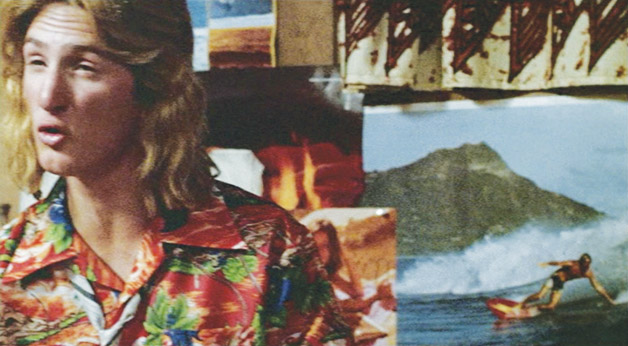
This is where Spicoli finally gives Mr. Hand his take on history: "What Jefferson was saying was, 'Hey, we left this England place 'cause it was bogus. So if we don't get some cool rules, pronto, we'll just be bogus too.'" I started the shot by panning across the surf posters and centerfolds on his wall because I like the contrast of his room, the stuff that interested him, with him finally saying something about history. It emphasizes that it's this kid saying that stuff. This set was just two cheesy walls, but when I first saw it, it looked like a seafood restaurant. It was jampacked with netting and weirdness. I tried to thin things out and make sure that the stuff there all meant something.
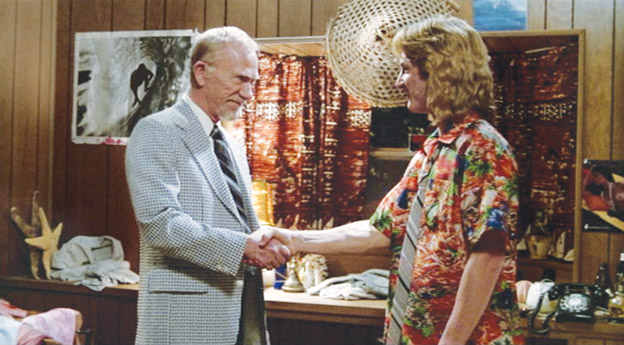
I'm not even sure that this scene was in the early drafts. But as we made the movie, it became clear to everybody that the Spicoli/Mr. Hand dynamic wasn't just about Spicoli being a jerk at school. It was a real relationship, and we wanted to resolve it, just as all the other relationships got resolved. And to me, the most important things in the movie were always the characters, their relationships and their stories. And then, hopefully, the comedy. But if the characters and their stories aren't working, that's a lot worse than if a piece of comedy isn't working. You can cut out the comedy. You can't cut out the characters.
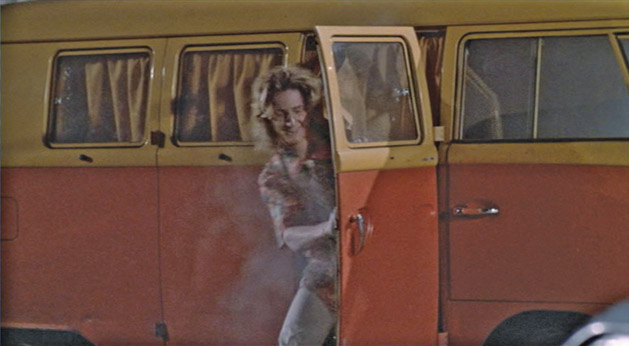
This shot, where Spicoli finally arrives at the dance, was done later. I had all these plans for montages to go with the music, but we didn't have the time or money to shoot them. But after we showed Universal the film, they gave us a couple more days and a little more money to let us go outside with some lights, and make it look like a movie. In this scene, the smoke was a nightmare. It was supposed to be pot smoke coming out of the van, and you had to make sure it hasn't dissipated by the time you drive up, so that it will waft out and look right. We had a guy with a smoke machine inside the van, and the actors were stuck in there. It was hideous.

The band is playing 'Wooly Bully,' which I think was a song my ex-husband wanted to do. It was Sean's idea to have Spicoli jump up and sing. All the little dancing, playing the drums—that was all Sean. He grew up on the beach, and he knows these surfer people. So there wasn't much I had to do with him, except that people were always telling me, 'Make him happier, make him happier!' But, you know, you don't tell Sean Penn to be happy. If you can give him a reason to be happy that makes sense to him, that's one thing. But he's going to stay in that character, and react the way that character would. To me, that was more important than making him happy or funny.
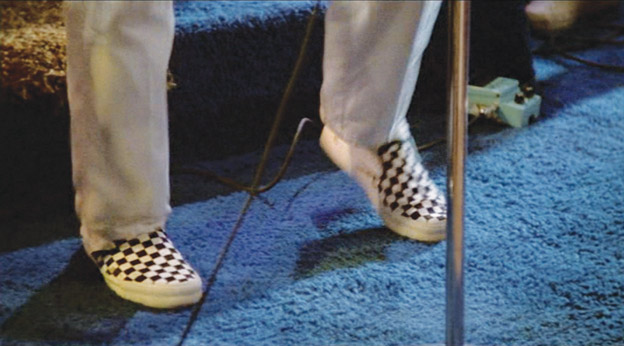
I think we had two days to shoot the whole dance sequence, so we were scrambling to get all the pieces and service all the characters. We didn't have time to set up a lot of shots—and when Sean decided to jump on the stage, I knew it was going to be hard to cover all of it. So this was one of the few times when I had a second cameraman running around grabbing shots. And the cameraman knew that I liked feet. I mean, it's not like I have a fetish, but when you see close-ups of hands or feet, they can be revealing. The shoes, the checkered Vans, came from Sean. I think Vans should have built him a house.

Sean had a little bit of a problem with some of the extras in this scene. There were some extras that I had seen in Penelope Spheeris' movie, The Decline of Western Civilization, and I thought, these people have a great look, let's get them. They turned out to be hard-core punks, and while we were waiting and setting stuff up, Sean thought it would be a good idea to start taunting them. I forget the exact words, but I think the punks said they were going to do a tapdance on Sean's face. The ADs had to hold them back, or pull them off Sean. I let the ADs handle it.

I wanted to make sure that everybody had a strong ending. So Judge Reinhold's character, who lives by his standing in the community and then ends up with the crummiest job, had his moment where he becomes the hero. Jennifer and Phoebe had their dramatic moment in the bathroom, but we made it so stupidly dramatic that it'd be silly, not sad. Rat and Damone, who weren't friends anymore, they needed their moment. And this is Spicoli's moment. Spicoli was always messing with people, and finally, when Mr. Hand showed up at his house, somebody messed with him. But that gets resolved, and in a way Spicoli's happier afterward, as he's having fun at the dance. He thought he would miss all the good stuff—but no, now he's the king of the good stuff.